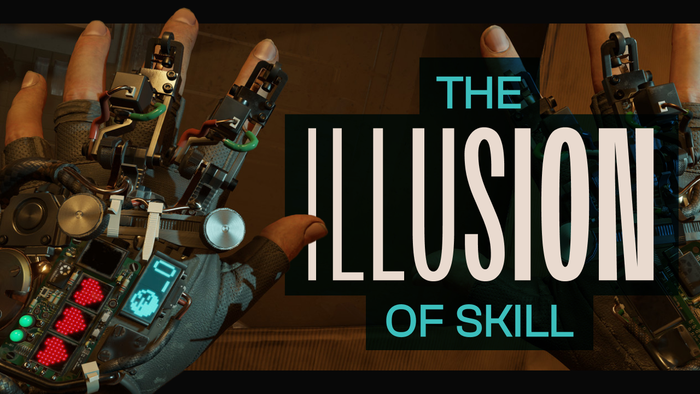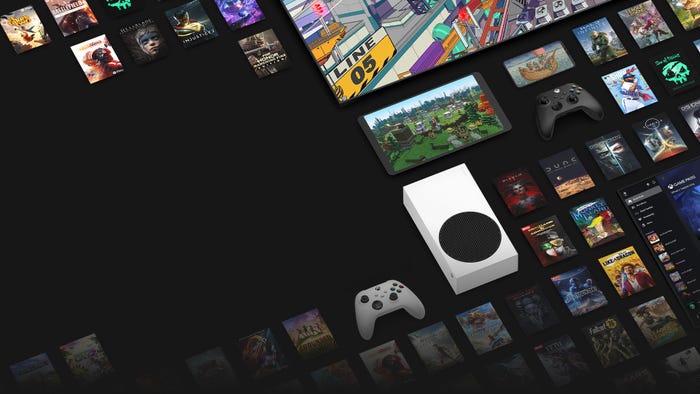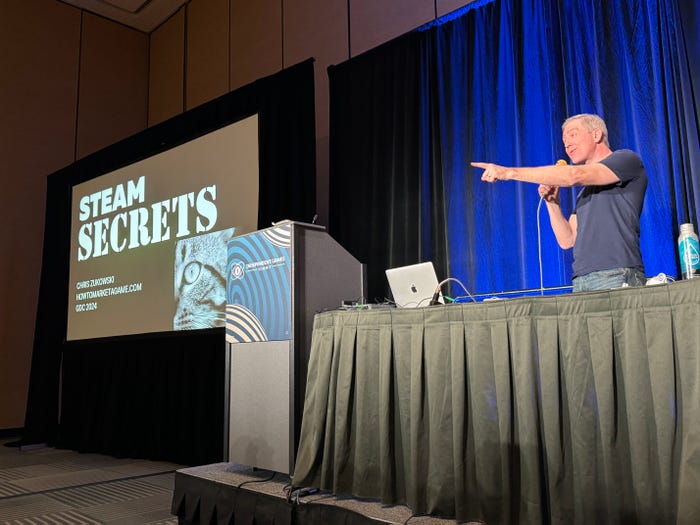How PlayJam plans to shake up the microconsole market
GameStick isn't the be-all and end-all in the UK-based PlayJam's microconsole plans. Other companies might be looking at how best to sell their own hardware, but PlayJam CEO Jasper Smith has broader plans.

"I don't think this battle of the microconsoles is going to be won in a quarter, right? It's going to take a long time for this trend... we're just part of a set of cogs that are rotating." Gamasutra can today reveal that the upcoming GameStick microconsole will be released worldwide on October 29 through GameStop and Game stores, as well as through Amazon, and the console's creator PlayJam directly for $79.99 / £79.99. We've also got the first glimpse at the full launch and launch window lineup for the GameStick -- but before we get to that, let's jump straight into the more exciting stuff. See, GameStick isn't the be-all and end-all in the UK-based PlayJam's microconsole plans. While other companies might be looking at how best to raise their own hardware above the competition, PlayJam CEO Jasper Smith has broader plans. "The core expertise in PlayJam is as a games network and operator that works with the developer community," he tells me. "GameStick is an essential part of our strategy - it's key for in terms of how we make money." "But ultimately, what we want to do is plug GameStick's network into as many other TV-relevant devices as possible because, for our developer network to get value out of what we're doing, we need to be serving tens of millions of devices - and however successful we are with selling GameStick, we're unlikely to sell tens of millions of them in the next few years." And PlayJam is already in the process of making this a reality. Although the details are under NDA, the company has made a notable deal with a rather large company that plans to enter the microconsole market soon, by which PlayJam will be able to offer publishing at a better rate than the aforementioned company themselves. "If you go direct with [the company], you might get 70 percent [revenue share]," Smith notes. "If you go direct with us, you will get at least the same, in addition to also getting on GameStick and Smart TVs." This is PlayJam's microconsole domination plan -- rather than just focusing on getting GameStick into as many hands as possible, PlayJam aims to be on as many microconsoles as possible within the next five years. This means that developers can come straight to PlayJam and publish across all microconsoles, rather than messing around multiple companies within a fragmented market. "If you look at the revolution coming to the living room through Android devices, on aggregate, there probably will be tens of millions of devices sold," notes the PlayJam CEO. "So what we're trying to do is get our developer community's games onto as many devices as possible." "Looking ahead five years, we would expect to see GameStick very much a part of the fabric of these microconsoles, and we'd hope to have a big marketshare in that," he adds. "But we'd also hope to see multiple of our developers' games being published through PlayJam on multiple other devices. Really, it's the only way a company entering this space can create sufficient traction for developers to be really motivated. Otherwise, you just end up with your own sales."  And just to prove that he isn't all talk, Smith mentioned another notable deal that PlayJam already has in place with another major company too -- again, the details are unfortunately under NDA, but the implications are massive. Smith hints that an announcement may be on the cards soon.
And just to prove that he isn't all talk, Smith mentioned another notable deal that PlayJam already has in place with another major company too -- again, the details are unfortunately under NDA, but the implications are massive. Smith hints that an announcement may be on the cards soon.
The hare and the tortoise
With the various delays that the GameStick has seen -- it was originally penned in for a June release, and then a September launch -- you could argue that this has left the PlayJam team is a favorable position. Since the Ouya has already been out for a few months now, Smith and co. have been able to watch what the Ouya team has done right and wrong, and learn some valuable lessons before the GameStick is even released. "You never want to be first, right?" Smith laughs. "There are learnings to take from people who have launched before us. Some of the things we may have done differently - I think we took a different route with the controller. We used a completely open-standard rather than proprietary standard. We used different paradigms around navigation and how you get into and out of games." Essentially, watching Ouya go first has given GameStick plenty to think about. "There's a lot to be said for letting others go first and learning from it. I think you always set out to create the best product you can, right? I'm quietly confident." Of course, the delays have also meant that PlayJam has caught a glimpse of Sony's own microconsole, the PS Vita TV, before GameStick's launch. "I'm intrigued by it," Smith says of the PS Vita TV. "I think it's just indicative of a trend that we saw some time ago. "I'd love to say it's Sony reacting to what we and others have done," he continues. "I suspect it's not! I suspect what they've seen is there's a sweet spot for really low-cost, good gaming in the living room. I think the difficulty it will have is that, as far as we're aware, the cost of games will still be relatively high, and I don't think it's a completely open ecosystem - I don't think they've used Android, it's still the Vita OS. I think ultimately, they can't compete with a completely open mobile ecosystem that has become Android. That being said, Smith is excited to see how the PS Vita TV shakes up the microconsole space. "There are mutliple box solutions that are going to go into people's living rooms, and what we're trying to do is create something that's even more portable than a box - the stick approach," he says. "I think the battle of the boxes will be the battle of the boxes, and we'll see what the battle of the sticks is like!"
What about developers then?
So let's say PlayJam can get you the wide microconsole audience you're looking for -- what exactly is the company doing to get developers on-board? "Our approach is to be very hands-on with developers," Smith answers. "We're out talking to developers on a regular basis, and we're trying to encourage them to look at the living room opportunity, and I think our key message to them is that we're very unlike most of the other solutions that are coming to market." This, he says, is because PlayJam's core business revolves around a games network that is on 80 million TVs today, with PlayJam network licensing agreements with multiple device vendors.
"So what we're really trying to do to, and GameStick is an essential part of that - what we're really trying to do is build a games network for TV that developers really want to join, because it takes all the friction out of them having to go and negotiate with Samsung, LG, Panasonic and all these guys." "We take a very personal approach to [speaking with devs]," he ads. "We like to have direct conversations, know people, talk to people, so the games we're getting through our pipeline are very high-quality. Part of what we're trying to do is not have millions of games on the platform, but have games that perform really well and are fun to play." Part of getting the message out to developers involves heading out to locations and shows around the world, spreading the word as much as possible. "The main thing we're doing is going to every trade show that we can shake a stick at, and talking to developers," Smith notes. "We have developer nights, and we reach out through every mechanism that we can reach them through. We're doing an event with Unity, one with ARM, we've got some GameStick nighs coming up, we did events at E3 and GDC, we're doing one in GDC China, we did one in South Africa..." PlayJam is a relatively small business with just 40 people at the helm, and five of those people are constantly on the road, talking PlayJam and the GameStick up. "Our ambition is to grow that team so that the thing that PlayJam does better than anyone else is just really manage a developer community, so that the community feels like its getting value from us." "Any console is made or broken by the quality of the games they've got," Smith says. "I think we've got a pretty good lineup, and we're working on making that lineup stronger as we go forward."
About the Author(s)
You May Also Like


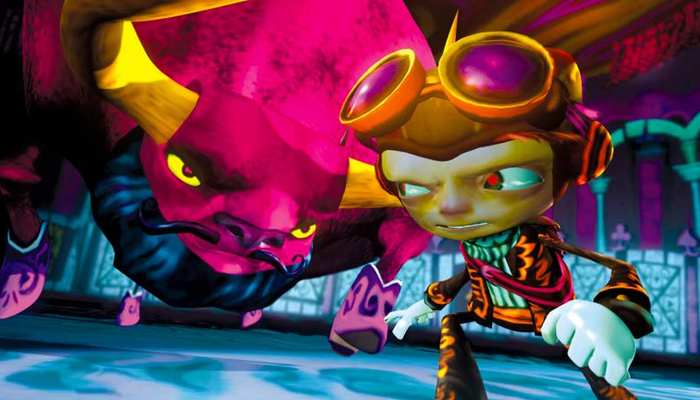
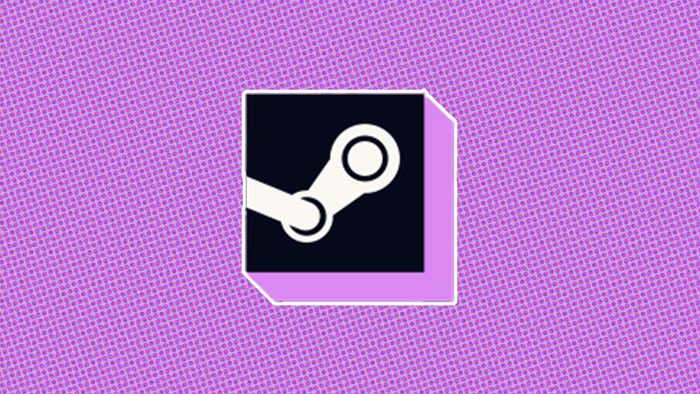

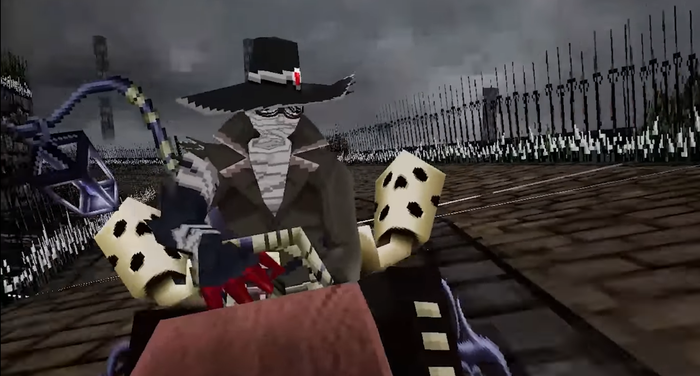
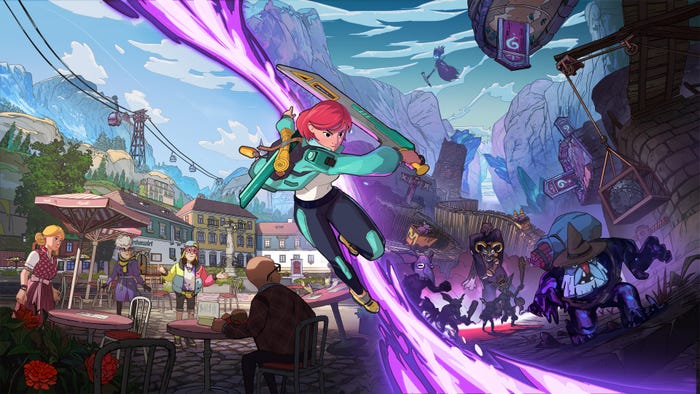
.jpeg?width=700&auto=webp&quality=80&disable=upscale)



